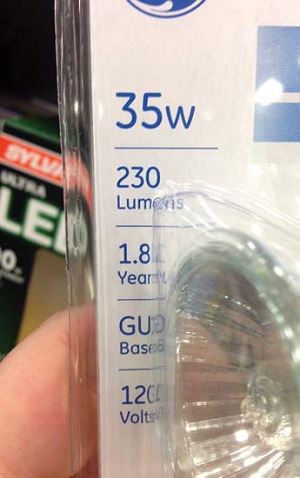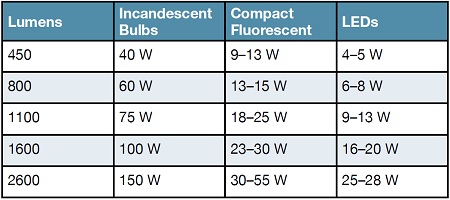Discussing Brightness and Lumens
In my day (excuse me while I stoke up my pipe), the principle measurement of photometrics was the footcandle. The humble footcandle is the measurement of the light of 1 candle on a 1 foot square area 1 foot away from the flame. Footcandles also had their counterpart, footlamberts, measuring light reflecting off of a subject. Light meters still operate in footcandles as do most photometrics reported by manufacturers to this date. The footcandle is the equivalent to 1 candela over 1 square foot.
SWITCHING TO METRICS
Of course, this is an English system of measurement—one that only a small handful of countries in the world today actually use. Hey kids, remember talking about the metric system in math class and being told that the United States would be switching over to metrics soon? Perhaps soon is really relative to the existence of time as we know it, rather than our individual lifetimes.
In any case, the metric measurement of footcandle is the lux, which is 1 lumen (let’s call the lumen and the candela “kissing cousins,” if you will) over a 1 square meter area. Pretty much exactly the same thing, except that 1 square meter is 10.74 square feet. So 1 lux = 10.74 footcandles. You with me so far?
OK, great. This is the professional way of discussing a luminary’s intensity of light over a given distance. What, however, if we just want to discuss the brightness of a source without regard to distance of light traveled?

Packaging requirements are moving away from wattage to denote lumens.
For more than one hundred years, this was commonly done by discussing the wattage of a given light source. As most incandescent light sources of similar wattage are close to each other in given output, this has become a standard. How bright of a source do you need? 100 watts? 200? 1,000? Professionals and laypersons alike had a frame of reference for these numbers.
My mother understands how bright a 60W bulb will be when she needs to replace a burned-out bulb in her living room. She knows that a 100 watt bulb will be too bright for her and a 40 watt bulb will be too dim.
We’ve utilized this same frame of reference for decades in the motion picture business—since the rise of the tungsten fixture (over carbon arcs). We order lighting based on wattage: six 1,000 watt fixtures, four 2,000 watt fixtures, 10 650 watt fixtures.
Yet wattage has no direct bearing on the brightness of a fixture, especially not in modern-day technology. Wattage only describes the amount of power necessary (the product of amperage and voltage) to power a luminary. As the technology of lighting continues to evolve, new advancements in lighting—HMIs, fluorescent, LED and plasma lighting fixtures—have substantially lower wattage ratings for substantially higher light outputs than the equivalent wattage in tungsten bulbs.
KNOWING THE DIFFERENCE
Generally speaking, lighting professionals simply, intuitively, know the difference. We understand that a 2,000 watt tungsten fixture would be substantially less bright than a 1,200 watt HMI fixture. Beyond newbies coming in on their first week of the job, this is common knowledge. However, how does 100 watts of LED compare to 100 watts of tungsten-halogen compare to 100 watts of HMI compare to 100 watts of fluorescent to 100 watts of plasma? Ask any gaffer, chief lighting technician or lighting designer and you’re likely to get a shrug. Try to ask a consumer what the difference is between a 100 watt CFL, 100 watt tungsten lightbulb and a 100 watt LED and you’re likely to get the deer-in-headlights stare.
As the different luminaries have different electrical requirements and efficiencies, we’re slowly doing away with the old frame of reference. This is starting in the consumer world where packaging requirements are moving away from wattage to denote lumens. How many lumens does a light source emit? In actuality, not just for typical consumers, but for all of us, this is a much more universal and accurate descriptor of a fixture’s brightness value, and where we should also follow with our own manufacturers reporting.

Table 1: Comparison of various lumen outputs and the relative wattage equivalents of consumer incandescent bulbs, CFLs and LEDs
The lumen is a consistent form of intensity measurement, regardless of the source or power consumption, (Table 1).
Obviously, when we can get roughly the same lighting intensity from a 25 watt LED as we can a 150 watt tungsten bulb, the wattage can no longer be considered a universal factor in determining a luminary’s intensity.
I’d like to see a lot more manufacturers of professional lighting equipment start to list the lumen output on their fixtures along with the typical photometric information. Hopefully many will follow suit in the next few years.
Jay Holben is the author of the book “A Shot in the Dark: A Creative DIY Guide to Digital Video Lighting on (Almost) No Budget.”
Get the TV Tech Newsletter
The professional video industry's #1 source for news, trends and product and tech information. Sign up below.
